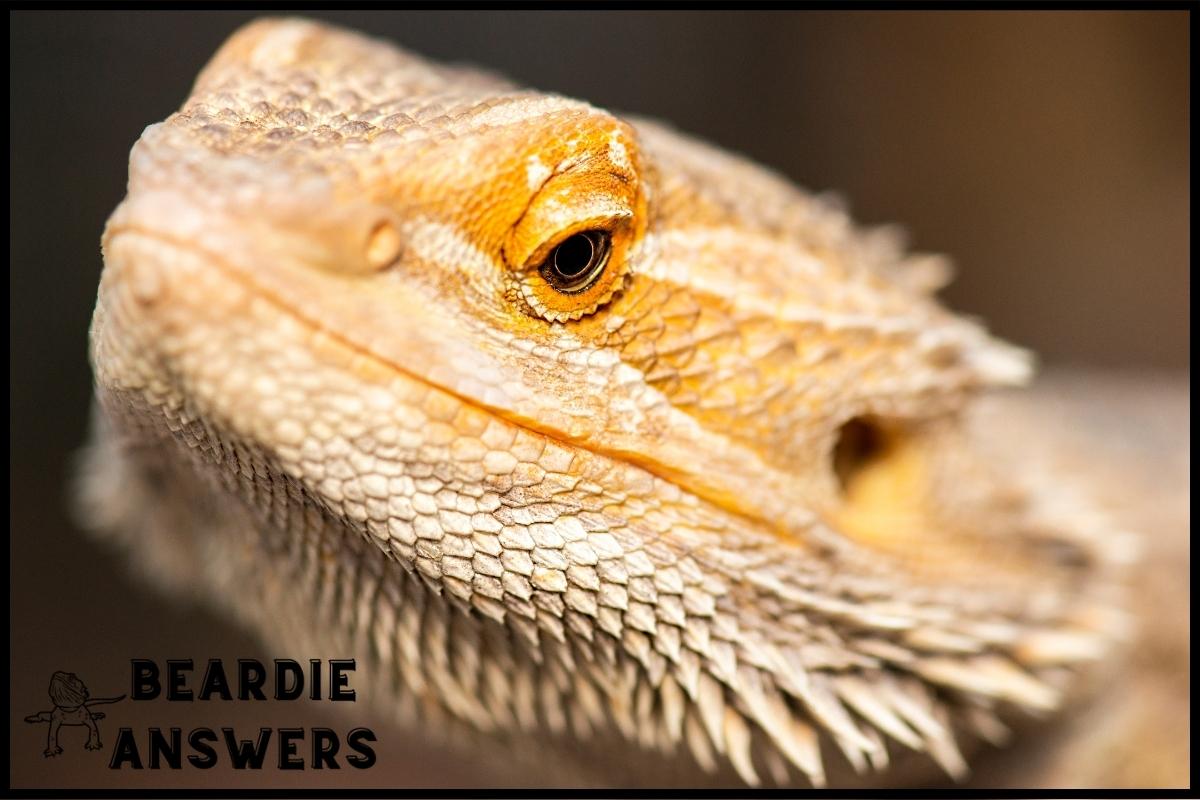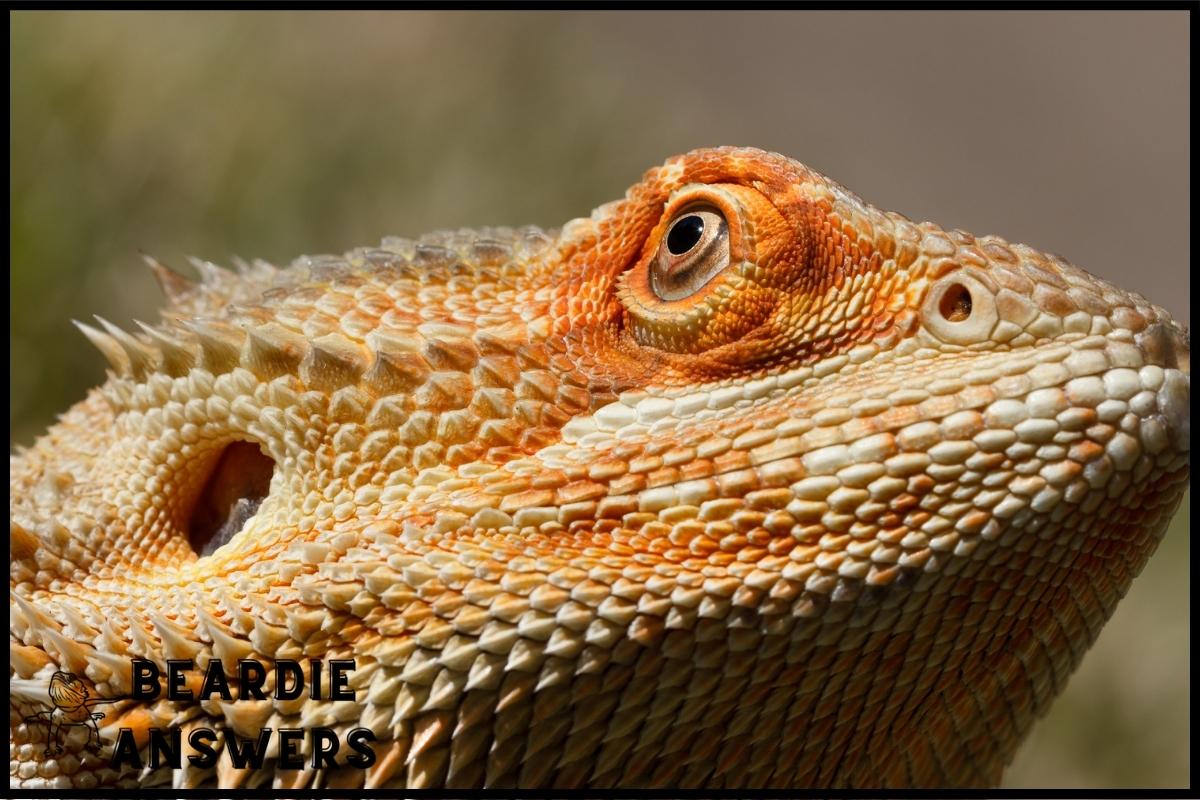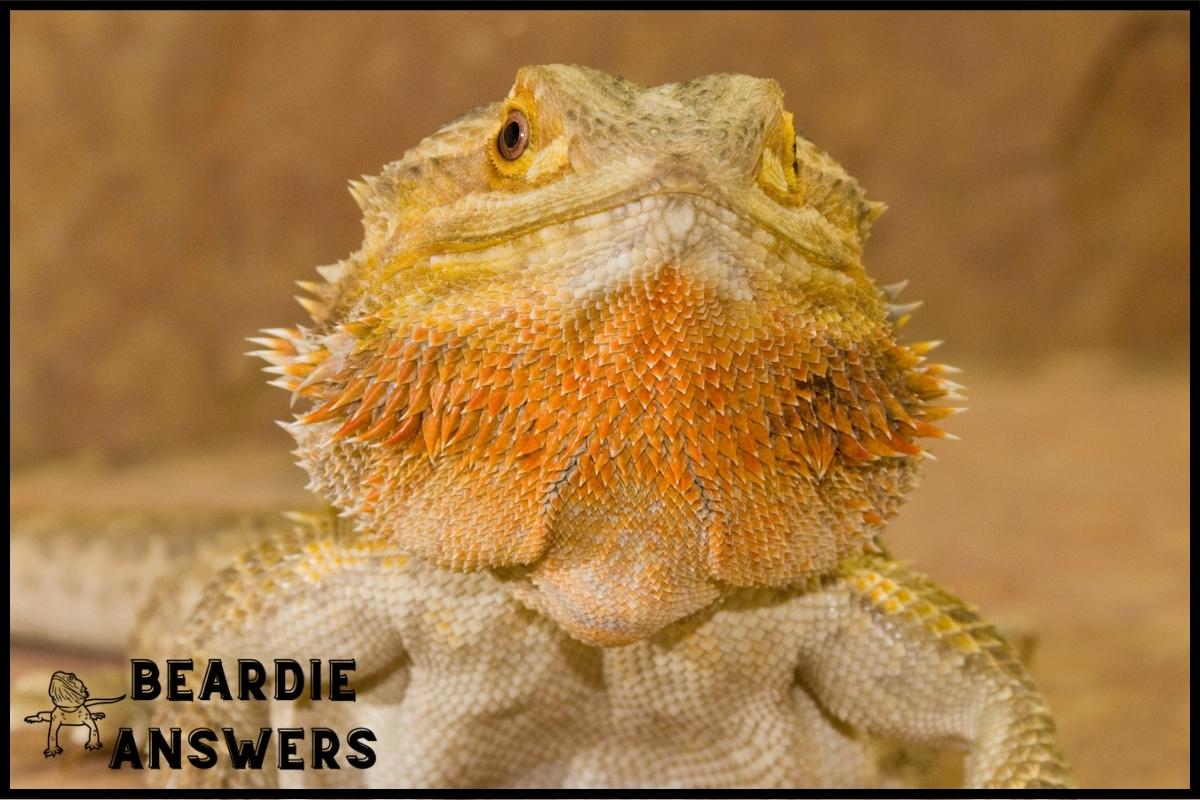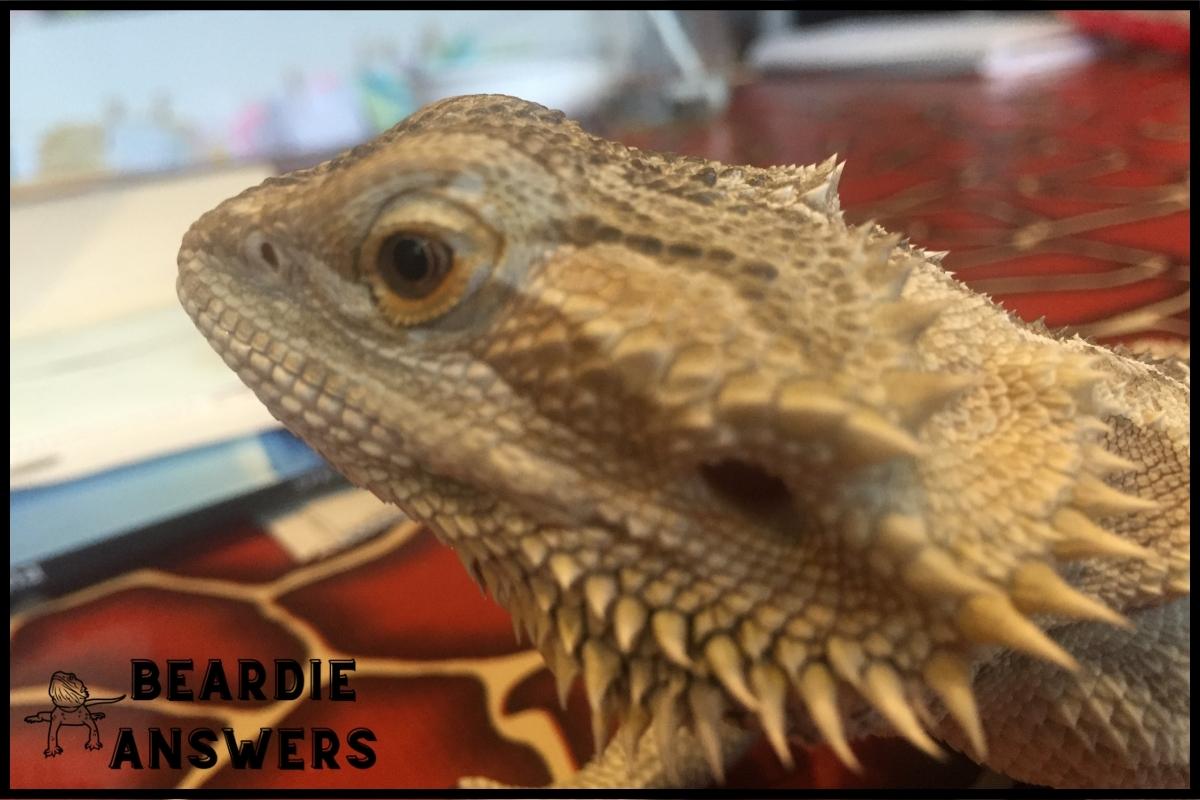How to take care of a bearded dragon for beginners: Taking care of a bearded dragon requires careful attention to their physical and environmental needs. Beginners should start by providing a tank with proper heating, lighting, substrate, food, water bowl, and decorations. A basking spot should be provided with a temperature range of 95-110 degrees Fahrenheit, while the cool side of the enclosure should be around 75-85 degrees Fahrenheit. Regular cleaning and disinfecting of the enclosure is important to prevent bacterial infections. Bearded dragons are also social creatures that benefit from human interaction, so handling them frequently can help build trust and promote health and happiness.
What You'll Learn
Tank Setup For Bearded Dragons
It is often theorized that one of the best ways to keep a bearded dragon happy and healthy is by providing them with an optimal tank environment. While this theory may hold true, it’s important to understand all that goes into setting up a proper tank for your pet.
Cleaning tanks on a regular basis, ensuring adequate UV exposure and temperatures, and supplying appropriate lighting are just some of the things you need to consider when creating your dragon’s home.
The first step in establishing your new tank is cleaning it thoroughly before use. This can be done using warm water and mild soap or bleach solution – make sure to rinse everything very well after cleaning!
Once the setup process has been completed, adding substrate such as sand or soil should come next. It’s essential that whatever material you choose provides good drainage since dragons tend to like dry habitats; sand is typically preferred over other substrates due to its ability to absorb heat better than other options available.
When choosing decorations for your tank, aim for items made from natural materials instead of plastic ones. Not only do these provide more entertainment opportunities for your dragon but they also help create a safer environment overall (plastic can potentially lead to health hazards).
Plus, having plants present will give your little friend something green and leafy to hide behind – which will make them feel much more secure in their space! With these considerations taken care of, let’s move on to temperature and lighting requirements necessary for keeping bearded dragons healthy…
Temperature And Lighting Requirements
Heating and lighting are two of the most important factors to consider when taking care of a bearded dragon.
Make sure to set up a basking spot with a temperature gradient and provide a UVB light with a reflector to keep the dragon healthy.
Also, use timers and position the lights at the proper distance from the dragon, and monitor the temperature and humidity levels for safety and shade.
Heating
When it comes to taking care of your bearded dragon, one of the most important things you need to know is how to provide them with proper temperature and lighting requirements.
To do this, heat sources like basking lights or ceramic emitters are essential for maintaining a warm environment; these should be connected to an appropriate thermostat that will accurately control the temperatures in the enclosure.
Make sure the correct wattage is used so as not to overheat your pet’s habitat!
With all of this taken into account, your bearded dragon will be happy and healthy.
Lighting
Now that we’ve discussed the importance of temperature for bearded dragons, let’s take a look at lighting.
Lighting sources like basking lights and ceramic emitters should be used to create an environment with enough light intensity for your pet.
Additionally, UVB bulbs are essential for providing your dragon with Vitamin D3; these need to be replaced every 6 months or so.
With the correct wattages being used as well as proper lighting sources, you’ll guarantee that your beardie is healthy and thriving!
Humidity
Now that we’ve discussed lighting, let’s look at humidity.
Humidity is also a very important factor to consider when caring for a bearded dragon, as it helps them regulate their body temperature.
To maintain the proper level of humidity in your pet’s habitat, you should mist its enclosure daily and use a reliable humidity monitor.
This will ensure that your beardie has the optimal amount of moisture for both comfort and health!
Substrate And Decoration
Now that we have discussed the necessary temperature and lighting requirements, it’s time to transition into substrate and decoration. This includes creating a naturalistic habitat with appropriate enrichment activities for your bearded dragon. It is important to remember that this type of environment helps to stimulate their minds and senses so they can feel more at home in their tank.
Here are some tips on how to create an ideal environment:
- Provide ample hide spots throughout the enclosure – these help provide security and mental stimulation for your beardie!
- Use organic substrates such as sand or soil instead of newspaper or paper towels. These materials allow your pet to dig around and explore (just make sure you monitor them during playtime!).
- Incorporate live plants, rocks, branches, logs, sticks – all things that mimic their natural desert habitats. Live plants also produce oxygen which is beneficial for them to breathe properly.
- Design creative decorations like PVC pipes or cardboard boxes for your reptile friend to crawl through – this will keep them entertained while providing much needed exercise!
All of these elements combined can provide hours upon hours of entertainment for your beloved pet while keeping them healthy and happy too! With proper habitat design in place, next up comes food and water…
Food And Water
Nourishing your bearded dragon’s body is just as important as nurturing its trust. As with all living creatures, it requires a healthy diet and adequate water intake to thrive. To feed the flame of life that lies within, let’s examine the nutrition needs and vitamin supplementation for this beloved pet.
Bearded dragons are omnivores and should be given both live insects such as crickets or mealworms, along with some leafy greens like collard greens, kale or dandelion leaves. Vegetables can also be fed including squash, bell peppers, carrots, corn and peas in moderation due to their high sugar content. A few times per week offer fruits such as apples or pears for an occasional treat. Calcium dusting on food items is essential for proper growth and bone development in addition to providing a multivitamin supplement specifically formulated for reptiles once weekly.
A shallow bowl of clean drinking water should always remain available which will provide hydration when licked up from the surface or splashed onto its beard during bath time fun. Furthermore, humidity levels in the tank must be monitored using a hygrometer to ensure optimal environmental conditions while misting lightly several times daily may help maintain these levels too.
With consistency and care, you can keep your bearded dragon happy and healthy.
Handling Bearded Dragons
When it comes to taking care of a bearded dragon, handling them frequently is key in building trust with your pet.
At first, you’ll want to start by getting the right enclosure size for your dragon and providing proper heating, lighting, substrate and decorations for their tank. It’s also important to include a water bowl large enough for the dragon to soak in if they choose too.
Once you have an appropriate habitat set up for your bearded dragon, it’s time to move on to bathing and other forms of care. Bathing is one way that dragons can stay clean while also helping regulate temperature as well as humidity levels within their enclosure. When bathing your bearded dragon, be sure not to use soap or any harsh chemicals – just plain warm water will do!
Other ways you can care for your beardie include:
Nail Trimming:
Bearded dragons’ nails grow quickly so regular trimming is necessary.
- Tools Needed: Pet-safe nail clippers or nail grinders and styptic powder (to stop bleeding)
- Tips: Make sure you are gentle when clipping/grinding the nails and don’t forget the back claws which can often get overlooked!
Shedding:
Shedding occurs naturally once every few months but sometimes skin gets stuck around the toes or face which needs to be removed manually using tweezers or damp cloths.
- Tools Needed: Tweezers and damp cloths
- Tips: Be very careful not to pull off any live skin during this process!
Diet & Nutrition:
Like humans, what we eat plays an integral role in our overall health – this concept applies to reptiles like bearded dragons too! Feeding them a variety of greens (collard greens, kale), insects (mealworms, crickets), fruits (strawberries) and veggies (carrots) will ensure they’re getting all the nutrition they need.
Helping establish good habits early on such as routine baths, nail trimmings and healthy eating makes taking care of a bearded dragon much easier down the line. While these tasks may seem intimidating at first glance, following safe practices will help keep both you and your pet comfortable throughout each step of grooming or feeding sessions.
With patience and consistency over time handling becomes less stressful allowing you both enjoy spending quality time together without stress or fear from either side.
Building Trust With Your Pet
Taming a bearded dragon is like taming any other pet. It takes time, trust and patience to build a positive relationship with your new scaly friend. As the old adage goes: “slow and steady wins the race” – this couldn’t be more true when it comes to socializing with these wonderful creatures!
Bonding experiences are essential for you and your dragon in order to foster a trusting connection between you both. One way of doing this is by establishing daily routines such as handling them frequently or providing regular meals. This will help create familiarity which can lead to an increased comfort level during interactions.
| Positive Experiences | Neutral Experiences | Negative Experiences |
|---|---|---|
| Playing together | Frequent Handling | Unexpected noises |
| Praise | Bathing | Startling movements |
| Offering food | Brushing | Unfamiliar objects |
Regularly engaging in enjoyable activities that promote socialization is key in ensuring successful long-term relationships with our scaly friends. So take some time each day to make sure your beardie gets plenty of love and affection!
Conclusion
Investigating the truth of caring for a bearded dragon can bring deeper meaning to those who are new to owning them.
I’ve found that providing the basics, like proper heating and lighting, along with decorations and food water bowls is essential in creating a safe environment for your pet.
Additionally, handling them frequently builds trust between you and your reptile friend.
Once these steps have been taken care of, there’s nothing else left but to enjoy your time spent together!

Hi! My name is Bryan, I am the “one behind the words” here are BeardieAnswers.com. I believe that providing quality care and nutrition is the best way to ensure the health of your pet. Every beardie is special and deserves the best care and attention. If you have questions about your bearded dragon, please don’t hesitate to ask! View My Full Author Page




